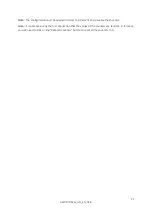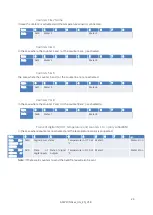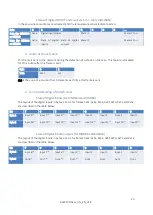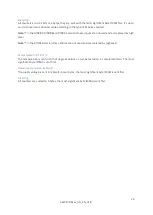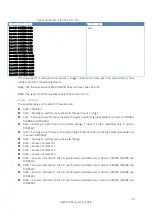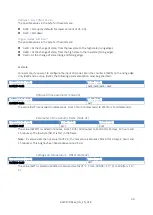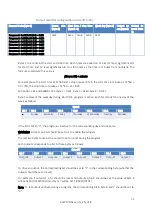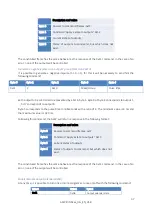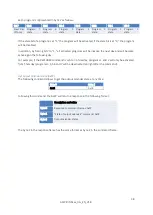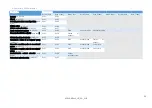
35
ACW-DINDxxx_UG_EN_V1.8
Byte 4 attests an error if that if not null. If byte 4 is null, byte 3 should have the same value as the
requested state when sending the command (byte 3 in the control frame). If byte 4 is non-zero, it
indicates which output cannot be controlled because it does not exist. For example, on a DIND44 if the
0xFF value is sent (byte 3 of the 0x10 control frame) the value 0xF0 will be returned and none of the
outputs will be driven by the ACW.
Example 1 (OK)
For example, for controlling all DIND44 outputs to 1, the following command must be sent:
Byte 0
Byte 1
Byte 2
0x41
0x10
0x0F
The answer of the ACW will be: The answer of the ACW will therefore be:
Byte 0
Byte 1
Byte 2
Byte 3
0x07
0x10
0x0F
0x00
Example 2 (KO)
If you want to control at 1 exit 8 of a DIND44 that does not exist, the following command must be sent:
Byte 0
Byte 1
Byte 2
0x41
0x10
0x80
The answer of the ACW will therefore be:
Byte 0
Byte 1
Byte 2
Byte 3
0x07
0x10
State of outputs
0x80
Byte 4 being different from 0, this indicates a pilot error and raises the bit of the invalid output
(in this case the output 8). The command is ignored, and no output will be commanded!
Obtain the state of outputs (Command 0x20)
In the same way as to affect the state of the outputs it is possible to recover their current state. For this
it will be necessary to send the following command:
Byte 0
Byte 1
0x01
0x20
Following this command, the ACW will return a response in the following format:
Description and value
Byte 0
Answer to command frames
: 0x07
Byte 1
Command ‘
state of outputs
’ : 0x20
Byte 2
Current states of outputs

